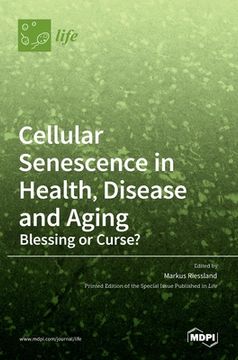Cellular Senescence in Health, Disease and Aging: Blessing or Curse? (in English)
Synopsis "Cellular Senescence in Health, Disease and Aging: Blessing or Curse? (in English)"
Dear Colleagues, When Hayflick and Moorhead coined the term "cellular senescence" (CS) almost 60 years ago, this phenomenon was understood as a mechanism, usually induced by activation of the DNA-repair machinery, to prevent uncontrolled proliferation. Meanwhile, additional beneficial roles for CS have been identified, such as embryonic development and wound healing. The senescence associated secretory phenotype (SASP) activated in most senescent cells (SC) signals to the immune system "come here and remove me". In organisms with young and functional immune systems, occurring SC are usually detected and removed. If SC remain in the tissue expressing the SASP, this will cause not just a damaging local inflammation but can also induce remodeling and regeneration of the surrounding tissue as well as spreading of senescence. Old organisms show reduced regenerative potential and immune function which leads to accumulation of SC. Accordingly, accumulation of SC was observed in tissues of aged individuals, but importantly also in the context of age-related disorders, neurodegenerative, or cardiovascular diseases and others. Because of its detrimental effect of the surrounding tissue, accumulation of SC is not just a consequence, but can rather been understood as a major driver of aging. In line with this, recent studies described that removal of SC showed beneficial effects on healthspan and lifespan. This exciting research led to the discovery of "senolytics", drugs which can kill SC. Given the heterogeneity of cell types that show senescence-like phenotypes, including heart muscle and post-mitotic neuronal cells, further research is required to unravel the molecular background that renders a cell type vulnerable to senesce. Additionally, it will be important to understand how senescence is cell type-specifically induced and which molecules serve as drug targets to prevent senescence and its spreading, or actively kill SC. This special issue will shed light on the molecular pathways of CS and inflammaging and on possible strategies to interfere with these processes.Dr. Markus RiesslandGuest Editor

